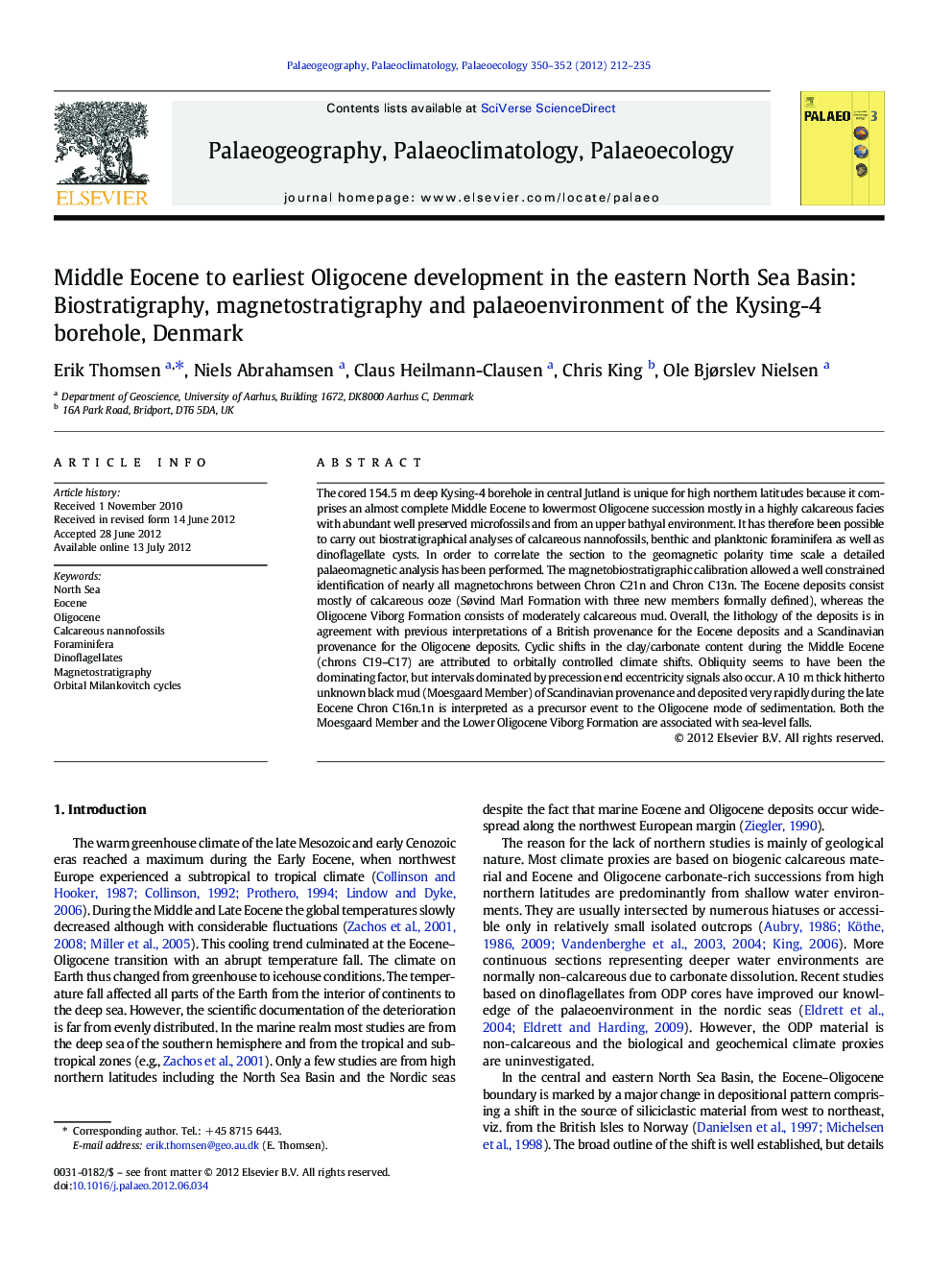| کد مقاله | کد نشریه | سال انتشار | مقاله انگلیسی | نسخه تمام متن |
|---|---|---|---|---|
| 4466831 | 1622225 | 2012 | 24 صفحه PDF | دانلود رایگان |

The cored 154.5 m deep Kysing-4 borehole in central Jutland is unique for high northern latitudes because it comprises an almost complete Middle Eocene to lowermost Oligocene succession mostly in a highly calcareous facies with abundant well preserved microfossils and from an upper bathyal environment. It has therefore been possible to carry out biostratigraphical analyses of calcareous nannofossils, benthic and planktonic foraminifera as well as dinoflagellate cysts. In order to correlate the section to the geomagnetic polarity time scale a detailed palaeomagnetic analysis has been performed. The magnetobiostratigraphic calibration allowed a well constrained identification of nearly all magnetochrons between Chron C21n and Chron C13n. The Eocene deposits consist mostly of calcareous ooze (Søvind Marl Formation with three new members formally defined), whereas the Oligocene Viborg Formation consists of moderately calcareous mud. Overall, the lithology of the deposits is in agreement with previous interpretations of a British provenance for the Eocene deposits and a Scandinavian provenance for the Oligocene deposits. Cyclic shifts in the clay/carbonate content during the Middle Eocene (chrons C19–C17) are attributed to orbitally controlled climate shifts. Obliquity seems to have been the dominating factor, but intervals dominated by precession end eccentricity signals also occur. A 10 m thick hitherto unknown black mud (Moesgaard Member) of Scandinavian provenance and deposited very rapidly during the late Eocene Chron C16n.1n is interpreted as a precursor event to the Oligocene mode of sedimentation. Both the Moesgaard Member and the Lower Oligocene Viborg Formation are associated with sea-level falls.
► Correlation of NP-zones and magnetostratigraphy, Eocene, North Sea.
► Integrated calcareous nannofossils, foraminifera and dinoflagellate stratigraphy.
► Milankovitch cycles dominated by obliquity; precession end eccentricity signals occur.
► Late Eocene cold water episode during Chron C16n.1n.
Journal: Palaeogeography, Palaeoclimatology, Palaeoecology - Volumes 350–352, 15 September 2012, Pages 212–235